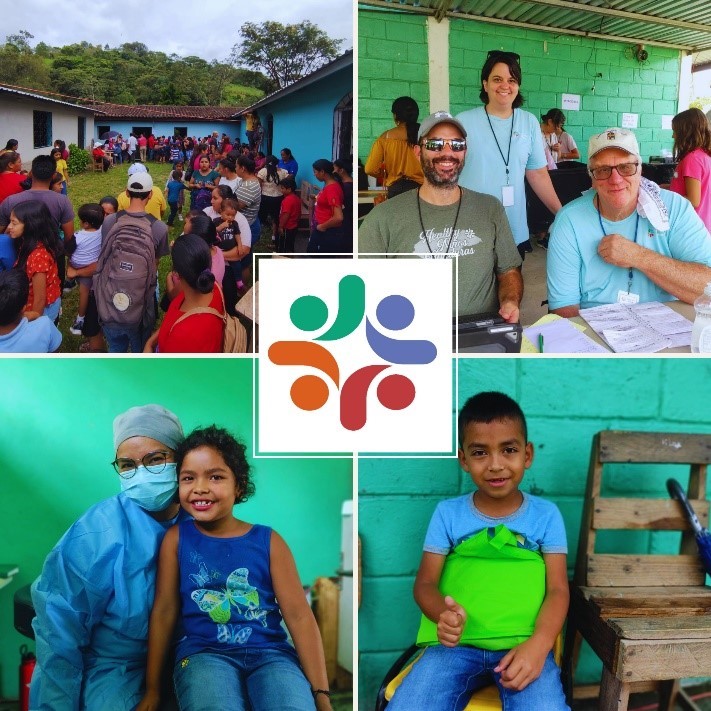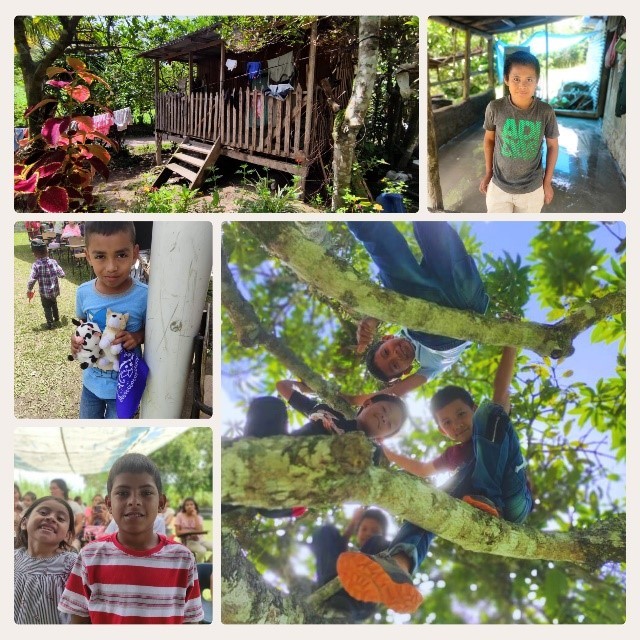by Javier Márquez
Editor’s Note: This is the first in a series of four feature articles on HNH, originally published in Spanish in 2024. All photos by Javier Márquez.

The Brigades
Every morning, after breakfast, four vehicles leave from the main facilities of the Conference-Related Ministry Healthy Niños Honduras (HNH) toward a local community that has been previously selected and prepared by the staff. Among these vehicles are a team of volunteers and medical staff, along with the medical brigade equipment. When they arrive, there are nine stations organized: registration, vital signs and vitamins, deworming, height and weight, donations, medical consultation, pharmacy, dentistry, and construction.
To reach the communities, one must drive to pick up the doctors working with HNH, then travel a path surrounded by cornfields, cross rivers, and climb mountains. When the brigade arrives, the community is always organized, either at the town’s school or church. Sometimes they have prepared signs that read “WELCOME,” and community leaders are always ready, some with lists in hand and a team prepared to help unload the truck and set up each of the stations.
Each brigade serves around 120 people per community, most of whom are children. The brigades provide families with donations such as clothing and toys, medically attend to the entire community, build floors in the poorest houses, and donate water filters. Undoubtedly the most important goal, though, is to identify children suffering from malnutrition, based on height and weight assessments. Once identified, the families—which often exceed 60% of those present—are invited to take their children to the Nutrition Center, a place designed for children to recover.

The Volunteers
The volunteer teams are a key part of this ministry. On each visit, a group from a Mennonite congregation in the U.S. volunteer for a week along with the medical team. Many of these congregations are part of Mosaic Conference. Last year, 56 teams from congregations volunteered.
The teams are diverse. At least twice a month, people of all ages, genders, and professions arrive. They are students, pastors, entrepreneurs, and retired people, some who are here for the first time and others have been serving with HNH for years. Many have developed friendships with people from HNH or the community.
They arrive enthusiastic, ready to lend a hand at one of the nine stations, prepared to learn and ask questions, to pray every morning before heading out to the brigades, and to pray and reflect with the Bible every night when they return.
The Communities and the Medical Team
It is amazing, even in areas where there aren’t many houses, how many people come to the school or church where the brigade will take place. That is how villages and mountains are throughout much of Latin America. Rural communities that, despite growing some crops, have a high level of malnutrition and poverty. Families who have been waiting for the brigade for months arrive clean and smiling. The brigade also strengthens community leadership and is a gathering time for locals.
The volunteers arrive alongside highly qualified doctors, nurses, interpreters, engineers, and community leaders. A staff person coordinates the brigade, including oversight of registering medical information, reviewing patients’ medical histories, attending to families, cleaning or extracting teeth, building floors, or encouraging families to go to the Nutrition Center.
The opinions expressed in articles posted on Mosaic’s website are those of the author and may not reflect the official policy of Mosaic Conference. Mosaic is a large conference, crossing ethnicities, geographies, generations, theologies, and politics. Each person can only speak for themselves; no one can represent “the conference.” May God give us the grace to hear what the Spirit is speaking to us through people with whom we disagree and the humility and courage to love one another even when those disagreements can’t be bridged.
This post is also available in: Español (Spanish)
This post is also available in: Español (Spanish)
